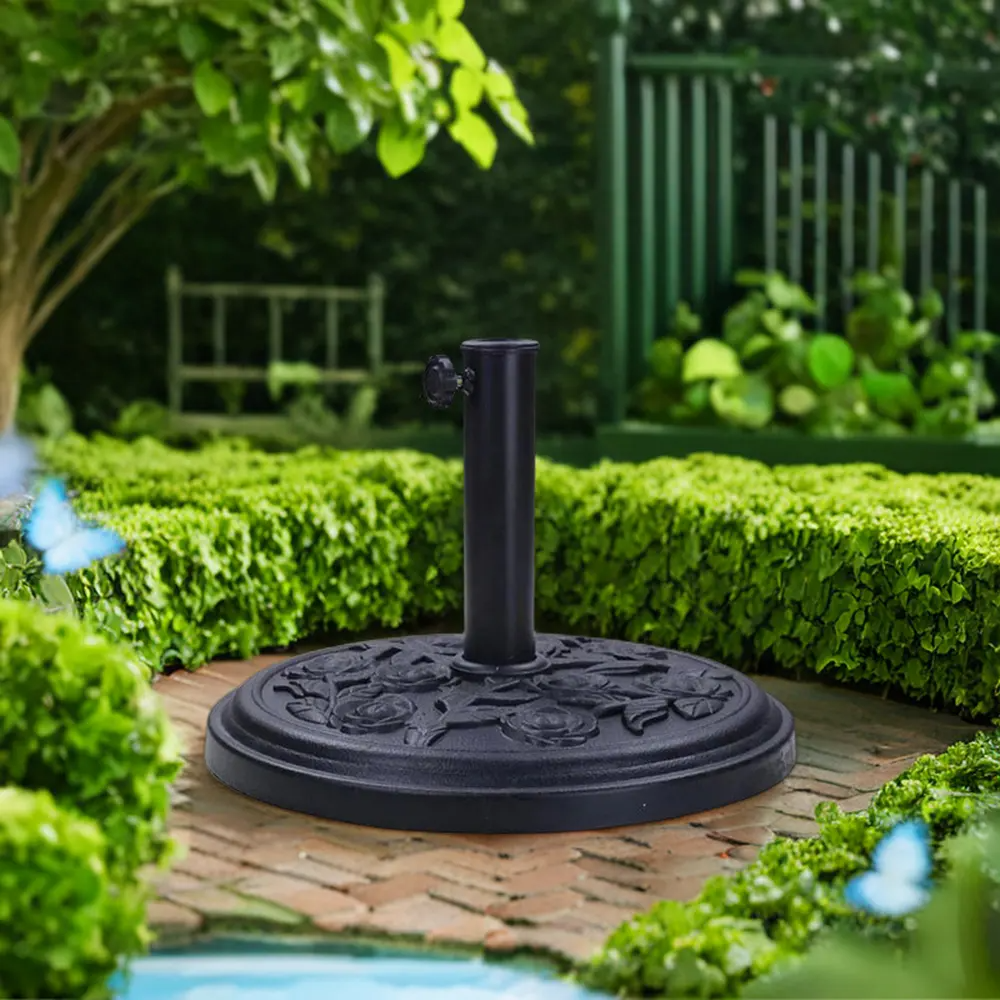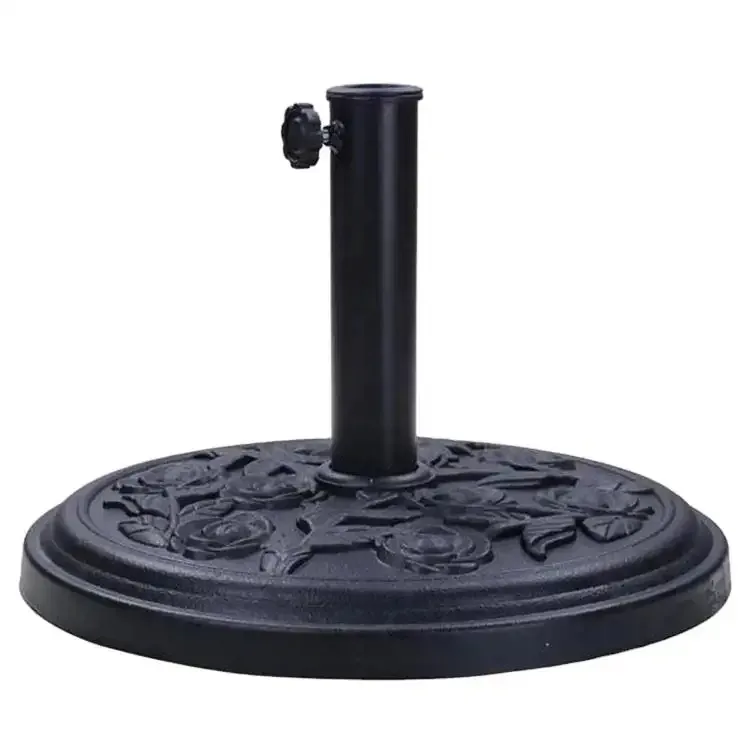
When selecting an umbrella base for your patio or outdoor umbrella, weight is a crucial factor. A base that’s too light can cause your umbrella to tip over in the wind, while a base that’s too heavy might be unnecessary for smaller umbrellas. Many people wonder, “Is a 50 lb umbrella base heavy enough?” This depends on several factors, including the size of your umbrella, the type of umbrella, and environmental conditions.
Before deciding if a 50 lb base is sufficient, it’s important to evaluate a few key factors:
The larger the umbrella, the heavier the base needs to be. Umbrellas with larger canopies catch more wind and require more weight to stay stable. Typically, patio umbrellas range from 6 feet to 13 feet in diameter, and the size of the umbrella directly influences the necessary base weight.
| Umbrella Size (Feet) | Recommended Base Weight (lbs) |
|---|---|
| 6-7 feet | 35-50 lbs |
| 7.5-9 feet | 50-75 lbs |
| 9-11 feet | 75-100 lbs |
| 11-13 feet | 100-150 lbs |
For umbrellas up to 7.5 feet in diameter, a 50 lb base should provide adequate support. However, for umbrellas larger than 8 feet, a heavier base will be necessary to prevent tipping, especially in windy conditions.

The type of umbrella you use also plays a role in determining if a 50 lb base is heavy enough.
Market Umbrellas: These are the most common type of outdoor umbrellas. They typically have a straight pole and are placed through a hole in a patio table. For these umbrellas, a 50 lb base may be enough if the umbrella is paired with a table that adds additional support.
Cantilever Umbrellas: These umbrellas have an offset base and are not supported by a table. Since they rely solely on their base for stability, a cantilever umbrella generally requires a heavier base. A 50 lb base is likely too light for a cantilever umbrella, which usually requires a base weighing at least 100 lbs.
Wind is one of the biggest factors in whether an umbrella will stay upright. If you live in an area prone to strong winds, a 50 lb base may not be enough to secure your umbrella, even if the umbrella itself is relatively small. On windy days, it’s important to close the umbrella to prevent it from becoming a sail.
In calm weather conditions, a 50 lb base can support smaller umbrellas up to 8 feet. However, if your region experiences regular gusts, it’s safer to opt for a heavier base.
The surface where your umbrella and base sit also matters. A 50 lb base on a solid surface like concrete or a deck may provide enough stability for smaller umbrellas, but on softer surfaces like grass or sand, the same base might not be sufficient. In softer ground, the base can sink, making it less stable and prone to tipping.
The material of the base impacts how effective it is in holding down the umbrella. Here are common base materials and their properties:
| Material | Advantages | Disadvantages |
|---|---|---|
| Cast Iron | Extremely durable and stable | Heavy, difficult to move |
| Plastic | Lightweight and affordable | Needs filling with sand/water |
| Concrete | Very heavy, durable | Not portable, hard to relocate |
| Resin | Weather-resistant, lightweight | Requires filling for extra weight |
A cast iron or concrete base that weighs 50 lbs will generally offer more stability than a plastic base of the same weight. Plastic bases often need to be filled with water or sand to provide sufficient weight.

A 50 lb base may be adequate in the following situations:
A 50 lb base is likely insufficient for:
In summary, a 50 lb umbrella base can be sufficient for smaller umbrellas (6-7.5 feet) and for umbrellas that are used in calm, sheltered areas or with a supporting patio table. For larger umbrellas, windier regions, or freestanding models like cantilever umbrellas, a 50 lb base will not be enough. You should consider a base weight of 75-150 lbs depending on the specific conditions and umbrella type.